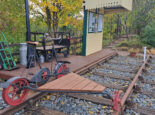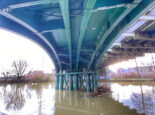High-tech trash

There’s more to emptying bins than loading them onto the lorry. Modern waste management relies heavily on technology to ensure efficiency, minimise disruption and maximise safety, as Waste and Recycling Manager Mick Robb explains
Readers probably don’t realise how much technology goes into collecting our waste and recycling. What are the main elements?
Every vehicle is tracked so we know where it is. This also allows us to run reports on driver behaviour, which can affect diesel usage. The reports mean so we can see who the most economical drivers are and check for things like speeding. We also use in-cab technology, so drivers can report in real time any problems they have with a bin. The council can in turn look at these reports so that, in the case of a complaint, they can get a full understanding of what’s happened. There are CCTV cameras on the outside of the lorries to help protect the crews, with everything recorded being kept for a month. Amey also has a policy of placing cameras on the outside of every vehicle so that drivers can look out for cyclists. Much of the technology is about keeping both the crew and the public safe.
Monitoring driving presumably helps you pick up inefficient driving styles. But do drivers receive training on how to drive more economically?
All our drivers are assessed before they go out on the vehicles. We have a trained assessor on site who goes out with the drivers to make sure they can drive over and above just having a license. We don’t normally have problems. The main issue is that the maximum you can get from the vehicles is 3mpg. That’s because the lorry is driving at walking speed and a lot of fuel is used to compact the waste.
Ali explained that you have up to 20 vehicles out in the city at any one time. How do you plan the routes so the crews aren’t getting under each other’s feet?
We use computer software to plan the routes, which takes into account things like the distance between properties. Every property is plotted onto the computer, which then works out the best routes. The routes then need to be sense-checked, but it’s a lot quicker than doing it all ourselves. The computer will be 80 to 90% accurate, but you need that local knowledge of one-way systems, school opening and closing times, traffic blackspots and so on. In the past it would have taken a manager five or six weeks to work out the rounds. With the software that’s down to just three or four days.
There must be inevitable crunch points though.
Towards the end of the day the crews within each group can be in the same area. They may even finish up on the same road if it’s a long one, although we want to avoid this where we can Within each group, the way the crews work is that they start the day further apart and gradually move towards each other. This is so that towards the end of the day they’ve got less distance to travel to help each other, saving time and fuel.
Are there any areas that technology can’t help with?
It can’t help out with the human side of things! Our crew members have to work in teams, which means they have to trust each other. It’s only human nature that sometimes it’s difficult to trust and this needs careful management. We also have to monitor and adjust the teams’ workloads. That means balancing out the abilities of each team, as some loaders may be younger or fitter, for example. A computer can’t make those sorts of judgement calls!
Counting costs
Recycling isn’t just good for the environment, it is good for council taxpayers too because it saves money which can be better spent on other services such as education and transport. The new energy recovery facility diverts waste from landfill, saving money in the process. But it’s even more beneficial to the council if you can recycle everything you possibly can first. As Amey’s Environmental Services Communications Manager Clark Chapman puts it: ‘Recycling should always be the first option, as it saves the most energy, money, and is better for the environment.’
Where does your waste go?
Green bin
After collection, all of the city’s recycling is taken to our waste transfer station where it is piled up ready for its onward journey to Amey’s materials recovery facility at Waterbeach. Here the recycling is sorted out into separate materials, including glass, cardboard, plastics and metals, which can then be recycled into new items.
Black bin
The non-recyclable waste in our black bins is taken directly to Viridor’s energy recovery facility (ERF) where it is burned to create electricity. The electricity generated is enough to power 15% of Peterborough households! The recently opened ERF facility was built to anticipate the city’s future growth and has the capacity to divert 85,000 tonnes of waste from landfill every year. It is so efficient that during the plant’s entire lifetime it will emit the same amount of carbon as just one of London’s New Year’s Eve firework displays. All emissions are scrubbed before release, ensuring a negligible impact on local air quality.
Brown bin
Garden waste is collected in the same (cleaned) lorries that are used to collect your black bin waste. The collected garden waste is turned into compost, which can then be used around the city’s parks and other green spaces to improve the soil and create a greener (literally!) environment.
Food waste caddy
Collected every week, your food waste is taken to an anaerobic digestion facility, where bacteria turn the food waste into biogas which is used to generate electricity. The residue from this process is a rich fertiliser, perfect for agriculture. Every tonne of food waste recycled this way prevents between half a tonne and one tonne of carbon dioxide entering the atmosphere.
Image: www.freepik.com/free-vector/chain-production-background_773773















